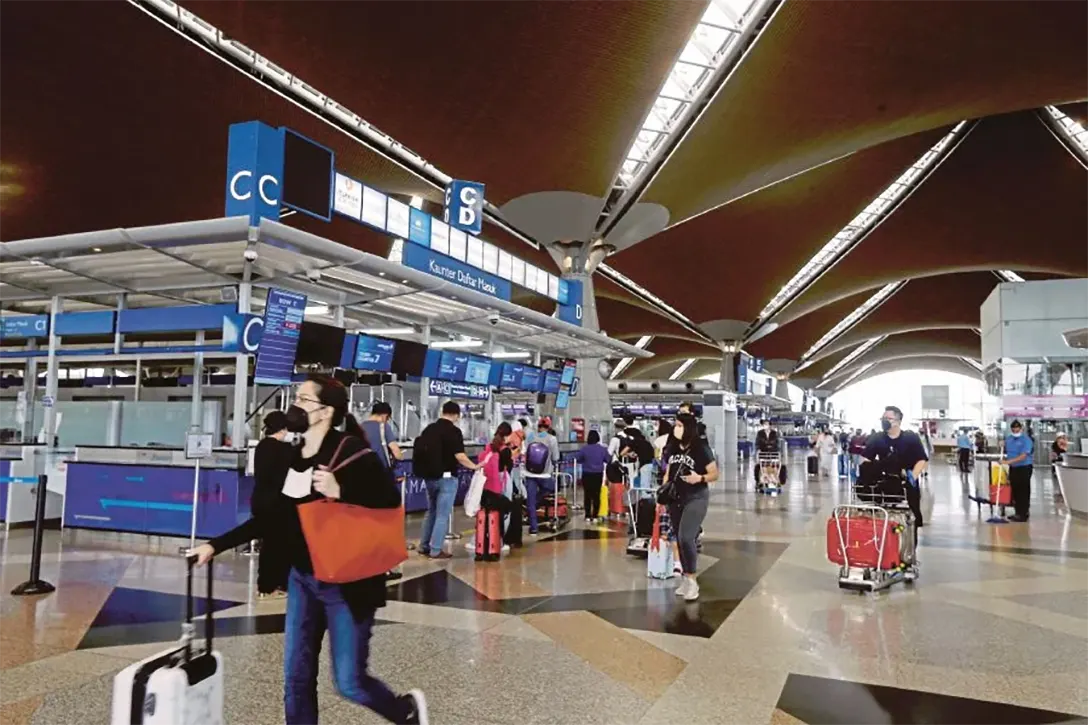1 August 2022

Malaysia Airports Holdings Bhd (MAHB) is not experiencing serious staff shortages at all of its airports, particularly the Kuala Lumpur International Airport (KLIA), says managing director Datuk Iskandar Mizal Mahmood.
He said this was because the national airport operator had taken a long-term decision to retain all of its 10,000 workforce during the Covid-19 pandemic period.
“I can’t say that we’re not seeing it (airport staff shortage). However, as far as MAHB is concerned, during the pandemic we took the long-term view or I would say there was wisdom into making the decision of not shedding any of our staff.”
“Airport is a rather complex business…It’s very difficult for us to shed people and get people in and train them overnight. We didn’t shed anyone and hence, we’re not facing the intense predicament that other airports have been facing,” Iskandar said.
He was speaking to reporters after the signing of memorandum of understanding of KUL Airport Collaborative Decision Making (A-CDM) system here last Friday.
The signing ceremony was witnessed by secretary general of Ministry of Transport Malaysia Datuk Isham Ishak.
However, Iskandar said there was a few shortages in some parts of the airport business such as the cleaning service, although it was currently being addressed.
“The key thing here is that as far as the airport itself, as far as the airport operations and so on, so far, we’re looking good,” he added.

Iskandar also said MAHB was doing its best to bring new airlines to KLIA as well as getting existing airlines to increase their flight frequency.
However, he said it was premature to say exactly how many airlines would fy to the airport by year-end due to external factors such as the lockdown in China.
“We don’t know whether China will open back either at the end of this year or 2023 or maybe I’m hearing 2024. So, it’s a little bit difficult. It’s something that’s up in the air.”
“As far as we’re concerned, we’re targeting as many (airlines) as possible, but this is still very much on the environment and also the whole entire global aviation sector performance,” he said.
Meanwhile, MAHB has invested RM40 million to introduce the A-CDM system with seven of its stakeholders to increase the operational efficiency of the KLIA eco-system.
The stakeholders include the Civil Aviation Authority of Malaysia (CAAM), Malaysia Airlines Bhd, Capital A Bhd’s AirAsia, Batik Air, AeroDarat Services Sdn Bhd, Pos Aviation Sdn Bhd and Ground Team Red Sdn Bhd.
The A-CDM integrates the operations of airport, air traffic control, regulator, airlines and ground handlers on a unified platform to achieve collaborative decision making that will establish common situational awareness and maximise the exchange of information.
Isham said the success of the system depended on cooperation and collaboration between all stakeholders and the introduction of the system was important during the period of air travel rebound.
“During pre-covid, the focus was on performance, efficiency and of course, profitability. But during this period of rebound, this is the best time for all parties to come together, put our resources and of course, led by MAHB with its RM40 million investment, to introduce a system that will integrate information, resources among all parties in the airport community,” he said.
Meanwhile, Iskandar said MAHB as a national airport operator was continuously working with all of its stakeholders to enhance the service standards.
He said the A-CDM used real-time data accessible to the stakeholders for smoother process flow management to better serve the passengers.
According to the International Civil Aviation Organisation (ICAO), 18 airports in Asia Pacific had implemented the A-CDM whereas 23 others were in the midst of embarking on it.
Source: www.nst.com.my
Site Search
Did you find what you are looking for? Try out the enhanced Google Search: